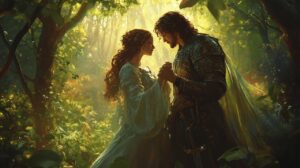The pursuit of personal enrichment through reading stands as one of the most rewarding endeavours one can undertake, particularly when exploring the vast realms of art and design. These disciplines offer not merely aesthetic pleasure but also profound insights into human expression, cultural evolution, and the principles that govern visual communication. For those eager to cultivate a deeper understanding of creative fields, a carefully curated selection of books can serve as both foundation and inspiration, guiding readers through centuries of artistic achievement whilst simultaneously sharpening their own visual literacy and creative thinking.
Essential art history volumes: building your foundation
Establishing a solid grounding in art history proves indispensable for anyone wishing to engage meaningfully with visual culture. Understanding the trajectory of artistic movements, the social contexts that birthed them, and the key figures who shaped their development allows one to appreciate contemporary work with greater depth and critical insight. A proper foundation in this area transforms casual observation into informed appreciation, enabling readers to recognise references, understand stylistic choices, and place individual works within broader cultural conversations.
Classic Texts on Western Art Movements and Periods
When beginning this journey, one might consider volumes that trace the evolution of Western art from antiquity through to the present day. These comprehensive surveys typically examine the major periods including the Renaissance, Baroque, Romanticism, Impressionism, and Modernism, providing context for how each movement emerged as both continuation and rebellion against what preceded it. Such books often feature reproductions of canonical works alongside analysis that illuminates the techniques, philosophies, and historical circumstances surrounding their creation. The most valuable texts in this category avoid dry academic prose in favour of accessible yet rigorous writing that brings historical periods to life, making centuries-old paintings and sculptures feel immediate and relevant. Understanding these traditions enriches one's capacity to engage with contemporary practice, as modern and contemporary artists frequently reference, challenge, or reinterpret the visual language established by their predecessors. For those seeking to cultivate themselves intellectually, these foundational texts offer entry points into conversations that span generations and geographies.
Contemporary perspectives on global art traditions
Whilst mastering Western art history remains important, a truly comprehensive education requires engagement with global artistic traditions that have often been marginalised in conventional surveys. Recent decades have witnessed a welcome expansion of art historical scholarship to include African, Asian, Indigenous, and other non-European practices, revealing rich visual cultures that developed according to their own aesthetic principles and philosophical frameworks. Books highlighting works by female artists across five centuries demonstrate how gender has shaped both artistic production and historical reception, correcting longstanding imbalances in the canon. These contemporary perspectives challenge readers to question inherited assumptions about what constitutes significant art and whose stories deserve prominence. They also reveal fascinating parallels and divergences in how different cultures have approached fundamental questions of representation, symbolism, and beauty. Engaging with these texts cultivates not only broader knowledge but also the intellectual humility and curiosity essential for continued growth. The creative process itself benefits from exposure to diverse approaches, as artists and designers draw inspiration from traditions beyond their immediate cultural context, creating hybrid forms that reflect our increasingly interconnected world.
Design Philosophy and Theory: Understanding the Principles
Beyond art history proper, books exploring design philosophy and theory provide frameworks for understanding how visual elements function in applied contexts. Design thinking encompasses everything from typography and layout to product development and urban planning, all governed by principles that balance aesthetics with functionality. These texts illuminate the reasoning behind effective design choices, teaching readers to analyse visual communication with greater sophistication and to appreciate the deliberate decisions that shape our built and graphic environments.
Modernist design thinking and its lasting influence
The modernist movement in design, which flourished throughout the twentieth century, established principles that continue to inform contemporary practice. Emphasising simplicity, functionality, and the honest expression of materials, modernist designers rejected ornament in favour of clean lines and rational organisation. Books examining this tradition explore seminal figures and institutions such as the Bauhaus, which revolutionised design education by integrating craft, technology, and theory. Understanding modernist philosophy helps explain why certain aesthetic choices feel timeless whilst others appear dated, as modernism established visual languages that permeate everything from furniture to websites. These volumes often include manifestos, essays by practitioners, and analyses of landmark projects that exemplify modernist ideals. For creatives seeking to develop their own practice, studying modernist design thinking offers valuable lessons about problem-solving, the relationship between form and function, and the social responsibilities of designers. The movement's emphasis on democratising good design and making quality accessible remains particularly relevant today, as designers grapple with questions of sustainability, inclusivity, and ethical production. Engaging with these ideas cultivates a mindset that views design not merely as decoration but as a powerful tool for improving human experience.
Architecture books that reshape your visual vocabulary
Architecture represents perhaps the most ambitious intersection of art, engineering, and social planning, and books exploring this discipline offer unique perspectives on how humans shape and are shaped by their environments. Architectural volumes range from monographs on individual practitioners to thematic explorations of building types, construction methods, or urban development patterns. The best of these publications combine stunning photography with thoughtful analysis, allowing readers to appreciate both the visual impact and conceptual underpinnings of significant structures. Understanding architectural principles enhances one's ability to read built environments, recognising how decisions about scale, proportion, materials, and spatial organisation affect functionality and emotional response. This knowledge proves valuable not only for those working in architecture or related fields but for anyone interested in how design influences daily life. Books on landscape painting techniques, for instance, often incorporate architectural elements, demonstrating how understanding structural forms improves artistic representation. Similarly, photography monographs frequently feature architectural subjects, with composition and perspective choices reflecting the photographer's grasp of spatial relationships. Expanding one's visual vocabulary through architectural study thus benefits multiple creative disciplines, fostering habits of careful observation and analytical thinking that enrich all forms of visual practice.
Creative practice guides: developing your artistic sensibility
 Whilst historical and theoretical knowledge provides essential context, books offering practical guidance help readers develop their own creative abilities. These volumes address the technical aspects of various artistic disciplines whilst also exploring the habits, mindset, and working methods that sustain creative practice over time. Whether one aspires to professional artistry or simply wishes to cultivate creativity as part of a fulfilling life, these guides offer tools and encouragement for the journey.
Whilst historical and theoretical knowledge provides essential context, books offering practical guidance help readers develop their own creative abilities. These volumes address the technical aspects of various artistic disciplines whilst also exploring the habits, mindset, and working methods that sustain creative practice over time. Whether one aspires to professional artistry or simply wishes to cultivate creativity as part of a fulfilling life, these guides offer tools and encouragement for the journey.
Illustrated technique books for hands-on learning
For those eager to develop specific skills, illustrated technique books provide step-by-step instruction in methods ranging from colour theory application to landscape painting approaches. These publications typically combine demonstration photographs or diagrams with explanatory text, allowing readers to follow along with exercises designed to build competence progressively. The most effective technique books acknowledge that practice and execution remain essential for training creativity, encouraging regular engagement rather than passive reading. Books focusing on elements of landscape oil painting, for example, might guide readers through mixing colours, understanding atmospheric perspective, and composing balanced scenes, with each lesson building upon previous skills. Similarly, volumes exploring colour theory often include exercises that help readers internalise relationships between hues and develop intuition about harmonious combinations. These practical resources prove particularly valuable when combined with broader theoretical knowledge, as understanding why certain techniques work enhances one's ability to adapt methods creatively rather than merely copying formulas. The process of working through such books cultivates patience, attention to detail, and problem-solving abilities that extend beyond specific artistic disciplines. Moreover, the tangible progress that comes from consistent practice provides motivation to continue developing one's skills, transforming initial curiosity into sustained creative engagement.
Artist Biographies That Inspire and Illuminate the Creative Process
Whilst technique books address the practical how, artist biographies explore the equally important questions of why and under what circumstances great work emerges. Reading about the lives of accomplished creatives reveals the human dimension behind celebrated achievements, including the struggles, doubts, and failures that inevitably accompany artistic development. These narratives demonstrate that creative courage often means persevering despite setbacks and that vulnerability and failure constitute not obstacles to overcome but essential components of authentic work. Biographies also illuminate how artists have balanced practical concerns such as financial stability with their creative ambitions, offering models for sustaining practice across a lifetime. Learning how various artists have structured their days, maintained boundaries, and navigated the business aspects of creative careers provides valuable guidance for those seeking to establish their own sustainable practices. Some biographies focus on specific periods or projects, offering intimate views of how particular works developed from initial concept through completion. Others trace entire careers, revealing patterns of growth and evolution that contextualise individual pieces within broader artistic trajectories. These stories inspire not through romantic notions of innate genius but through honest accounts of dedication, experimentation, and gradual mastery. They remind readers that artistic development unfolds over time, requiring patience and persistence alongside talent and vision. For anyone seeking to cultivate themselves creatively, these biographies offer both inspiration and practical wisdom about maintaining creative vitality throughout life's inevitable challenges and transitions.
Visual culture and aesthetics: expanding your cultural literacy
Beyond specific artistic disciplines, books exploring broader themes of visual culture and aesthetics help readers develop frameworks for understanding how images function within society. These texts examine everything from the psychology of perception to the politics of representation, encouraging critical engagement with the visual messages that saturate contemporary life. Developing this cultural literacy enhances one's ability to navigate an increasingly image-driven world with discernment and sophistication.
Photography Monographs and the Art of Seeing
Photography monographs showcase the work of individual photographers, offering sustained engagement with a particular artistic vision. These beautiful volumes allow readers to immerse themselves in how a single practitioner sees and interprets the world, revealing consistencies of approach that define distinctive styles. The best photography books combine stunning reproductions with essays that contextualise the work historically and conceptually, helping viewers appreciate both technical mastery and artistic intention. Studying photography cultivates what might be called the art of seeing, the ability to recognise compelling compositions, meaningful moments, and visual relationships that others might overlook. This skill proves valuable across creative disciplines, as the principles governing effective photographs apply equally to painting, graphic design, and other visual forms. Photography monographs also document particular places, periods, or communities, serving as both artistic statements and historical records. They preserve ways of life, capture social conditions, and bear witness to events that might otherwise fade from collective memory. Engaging with these works thus expands not only aesthetic appreciation but also understanding of diverse human experiences. For those interested in developing their own photographic practice, monographs provide inspiration and education simultaneously, demonstrating possibilities whilst also setting high standards of excellence. The contemplative act of slowly working through a photography book, considering each image carefully rather than scrolling rapidly past, itself constitutes a valuable practice in an age of visual overstimulation, cultivating attention and receptivity essential for both creating and appreciating thoughtful work.
Graphic Design Compendiums for the Discerning Eye
Graphic design compendiums collect exemplary work across various applications including poster design, book covers, branding systems, and editorial layouts. These volumes serve multiple purposes, functioning as reference libraries for working designers, inspiration sources for students, and educational tools for anyone interested in visual communication. The most valuable compendiums organise material thematically or chronologically, allowing readers to trace the evolution of particular approaches or compare solutions to similar design problems. Studying these collections trains the eye to recognise effective use of typography, colour, composition, and imagery, developing an intuitive sense of what works and why. This visual education proves useful even for those not working professionally in design, as everyone navigates designed environments and makes choices about visual presentation in contexts from social media to professional communication. Understanding graphic design principles enables more discerning consumption of visual culture and more effective creation of one's own materials. These books often include commentary from designers explaining their processes and decisions, providing insight into how creative solutions emerge from constraints, client requirements, and iterative refinement. This glimpse into professional practice demystifies the creative process, revealing it as disciplined work rather than mysterious inspiration. For those pursuing multi-hyphen careers that combine creative work with other activities, understanding graphic design basics proves particularly valuable, enabling effective self-presentation and communication across platforms. The habit formation required to develop design skills through regular study and practice parallels the discipline needed for success in any creative field, making these compendiums valuable not only for their specific content but also as models of how sustained engagement leads to mastery.





